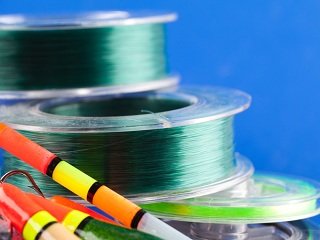 We are coming in on the home stretch of our series on knots, folks! I really hope it has been informative and helpful for you all so far and that it has helped you feel more prepared on the water. Today, we finish up with another handful of hints concerning knots and the line used to tie them, so keep reading!
We are coming in on the home stretch of our series on knots, folks! I really hope it has been informative and helpful for you all so far and that it has helped you feel more prepared on the water. Today, we finish up with another handful of hints concerning knots and the line used to tie them, so keep reading!
I know it may be quicker and easier, but please try to avoid cutting line with your teeth while fishing. This can cause serious damage to your teeth, potentially cracking or chipping them. I worked with a kid who had a permanent chip in one tooth from years of using it to cut line on the fly when fishing. True story. It’s good practice to keep a pair of line cutters or line scissors clipped to your shirt or hanging around your neck while fishing so you can cut line without having to use your teeth.
The only time your teeth should come into contact with line is when you use them as a third hand while tying knots. However, you should only bite down on the tag ends of the line in order to prevent causing any damage to the line you’ll be relying on.
Knots and fishing line will become weak over the course of a day on the water for many reasons. One main reason is lifting a fish from the water and into the boat instead of netting it or using your hand. This puts a lot of pressure on the line and the knot. Also, bullet weights are great, but be sure to use a glass bead with them in order to prevent them from repeatedly bumping into knots, which can cause abrasion. Split rings are a popular tackle item, but anglers often tie line to them in the wrong spot. Don’t tie the line in the split, but rather opposite the split. The ends of the ring where it opens up may weaken the knot by nicking or even cutting into it.
After each catch, take a good look at your knots. If a knot moves on the eye of the hook during the fight with the fish, readjust it. Also, retie if a knot looks a little off in any way, since the position of knot change under the strain of the twists and turns placed on it when fighting a fish. Retie knots periodically, even if they look fine, because they may weaken during a normal day of fishing. Furthermore, retie after landing an especially large bass, catching a series of moderate sized bass, or even after pulling a smaller bass through thick weeds. In fact, it’s good practice to inspect the line and retie after each keeper fish caught.
Keeping these tips in mind and utilizing them on the water will go a long way towards ensuring you bring more fish to the boat and spend less time stressing about breaks in your line. Again, I hope this series has been helpful to you in even a small way and that you’ve learned something new over its course. May your knots stay tight and your line strong, everyone!








